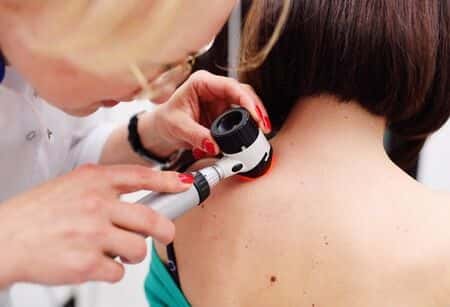Dermatologist Fails To Diagnose Skin Cancer In Symptomatic Patient
Updated on
This case involves a 52-year-old woman who was treated annually by a dermatologist for lesions. Her dermatologist assessed the lesions on her neck as actinic, and she was treated with liquid nitrogen. Several months later, the lesion on the patient’s neck returned. The dermatologist sent for a biopsy which came back as squamous cell carcinoma. The lesion was treated with a topical anti-tumor medication and went away for about a year. The patient returned the following year to report a non-healing lesion on her neck. The dermatologist applied liquid nitrogen to the lesion and started the patient on an emollient cream. The patient returned 6 months later reporting that she was again having issues with the lesion. The dermatologist froze the lesion and advised the patient that she was fine. The next year, the patient presented for follow-up evaluation and the dermatologist set the patient up for a biopsy. The biopsy returned as stage IV malignant melanoma.
Question(s) For Expert Witness
1. How frequently do you see patients like this?
2. What is the proper documentation protocol and standard of care when a lesion is found?
Expert Witness Response E-187881
![]() I frequently see patients following for skin checks and concern for precancers and skin cancers, like the one described above. In addition, in my role as residency program director and clinical professor of dermatology, I frequently take care of patients for skin checks/treatment of actinic keratoses and skin cancer. I see this type of patient every day in my clinic, typically several each day. I teach residents and medical students at the bedside several times a week about proper technique for clinical and dermatoscopic examination of benign and malignant neoplasms. I also teach the proper ways to document their findings to a support assessment and plan. Documentation of clinical exam +/- dermatoscopic evaluation is appropriate to support assessment and plan for a lesion of concern. If clinical monitoring is deemed to be the appropriate course of action then repeat documentation of clinical exam +/- dermatoscopic evaluation would be standard.
I frequently see patients following for skin checks and concern for precancers and skin cancers, like the one described above. In addition, in my role as residency program director and clinical professor of dermatology, I frequently take care of patients for skin checks/treatment of actinic keratoses and skin cancer. I see this type of patient every day in my clinic, typically several each day. I teach residents and medical students at the bedside several times a week about proper technique for clinical and dermatoscopic examination of benign and malignant neoplasms. I also teach the proper ways to document their findings to a support assessment and plan. Documentation of clinical exam +/- dermatoscopic evaluation is appropriate to support assessment and plan for a lesion of concern. If clinical monitoring is deemed to be the appropriate course of action then repeat documentation of clinical exam +/- dermatoscopic evaluation would be standard.
Subscribe to our newsletter
Join our newsletter to stay up to date on legal news, insights and product updates from Expert Institute.
Sign up nowFind an expert witness near you
What State is your case in?
Subscribe to our newsletter
Join our newsletter to stay up to date on legal news, insights and product updates from Expert Institute.


